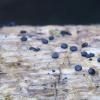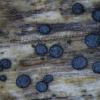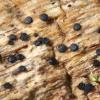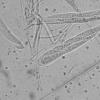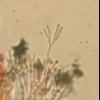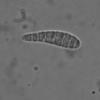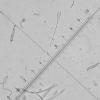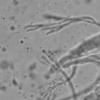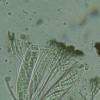
23-06-2025 04:03
 Francois Guay
Francois Guay
Hi, I found this tiny sulfur yellow asco growing o

22-06-2025 13:52
 DirkW
DirkW
Dear friends,anyone out there with this paper?:DOU

26-05-2025 18:09
Henk RemijnGood day,In a burned forest near Hulst on the bord

20-06-2025 08:33
Hello.Small, blackish, mucronated surface grains s

19-06-2025 22:19
Björn NordénBig thanks in advance.

11-06-2025 16:26
Hi everyone, I am looking for the following protol

18-06-2025 19:24
 Bernard Declercq
Bernard Declercq
Good evening,On Oenanthe aquatica we collected a

18-06-2025 16:24
 Andgelo Mombert
Andgelo Mombert
Bonjour,Un minuscule stade imparfait, qui pousse s
 I found these tiny, flattened, sessile fruiting bodies 0.2-0.4 mm wide om bark of a decidous branch (Ficus carica if I remember well).
I found these tiny, flattened, sessile fruiting bodies 0.2-0.4 mm wide om bark of a decidous branch (Ficus carica if I remember well). - Paraphyes with black pigments, tips not particularly swollen, x2 -x4 branched, very beautiful.
- Asci 8-spored, J-ve, spores imbricated and tightly packed, 80-150 x 17-22 um wide (looking quite stout)
Spores 25-40um long, 6-10 septate, unsymetrically fusiform / irregular



https://fungi.myspecies.info/all-fungi/patellaria-atrata
Thank you.

There we go ;-)
So those branched structures are called Interascal tissue (not paraphysis) ...
Thanks and I should have taken better pics, they are somewhat not in focus :-(
Martin is surely right, but the apothecia are unusual small for P. atrata. If you still got some fresh material, please show us some mic´s taken in tab water.
Cheers,
Guy

tnx :-)
In the last 6 years I had 5 collections from Patellaria atrata on Ficus carica (from southern France) with apothecia from 0.5 to 1.2mm in diameter.
P. atrata grows quite well in culture (on CMA 1:1).
Regards,
Guy

Hello,
While going to dissect fresh specimens, I realized that in the previous measurments I must have used the wrong scale of measurement, and the actual measurments are within the range of P. atrata, although on the lower range. The largest one was 0.68 mm along the widest axis.
0.4 - 0.6 (0.7) × (0.3) 0.4 - 0.5 (0.6) µm
Q = (1) 1.1 - 1.3 (1.4) ; N = 15
V = 0 µm3
Me = 0.5 × 0.4 µm ; Qe = 1.2 ; Ve = 0 µm3
I read that apothecia are 0.3-1 mm diam so I t hink we are good.





Thank for yr help once again

